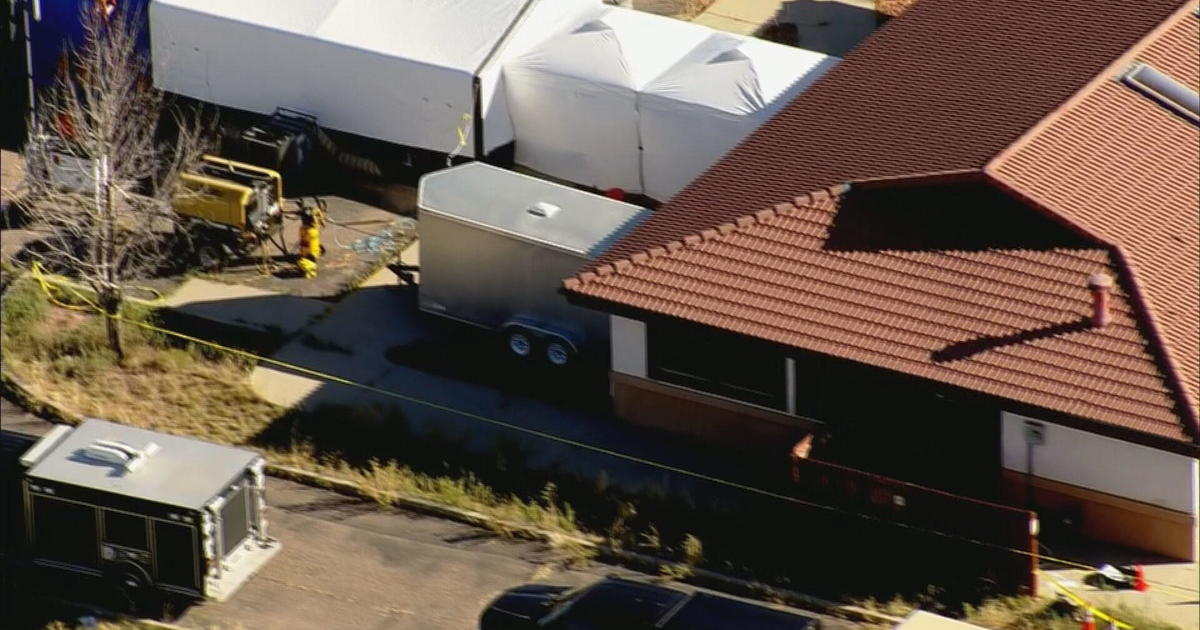Everything You Need To Know About The Animas River Spill
DENVER (CBS4) - The blowout of Gold King Mine into the Animas River has created controversy, harsh feelings, and a lot of questions. CBS4's Jeff Todd has covered the story since it began, so he answered some of the big questions in an effort to provide you with basic information on the many issues.
So we know there was a spill -- how did it happen?
Todd: Yes, on Wednesday Aug. 5 four Environmental Protection Agency employees were working with a contractor to clean up an area around the North Fork of Cement Creek north of Silverton very close to the ski area. The EPA has told us the crew was poking around and testing the area when what was believed to be a dam was punctured. The area ended up just being loose dirt and gave way very easily. Sunday the EPA finally announced three million gallons of mine waste made its way into the river. The river continued pouring out about 10,000 to 15,000 gallons a day, until Saturday when retention ponds were built.
Why was the EPA working here in the first place?
Todd: There is a long history of pollution and government attempts at cleaning up the area. The EPA wanted to designate the area a Super Fund Site, but locals in Silverton have fought that designation because it threatened tourism, among other issues.
There are a number of mines in the area that have been polluting the creek, which eventually flows in to the Animas River, for decades. Groups like the Animas River Stakeholders Group have worked on cleaning up mine tailings but these mines that continue to leak are a bigger problem requiring federal tools and money.
Why is the water orange?
Todd: That comes from the metals that have been disintegrating in the mine for years. Experts tell us it comes from iron-oxide which is quite prominent in the area. You can read the most recent metal data here.
While only preliminary data has been released, it does show high levels of manganese and zinc. The graphs are found here. One water expert we spoke with said he's still waiting to see the data that the EPA releases of tests in Durango during and after the plume hit.
Are the metals in the water dangerous (to human health)?
Todd: Simply put, yes, high levels of zinc and arsenic and manganese are harmful to our health. The river has been closed and people are urged to stay out until the EPA releases numbers that confirm the water is safe. So no rafting or kayaking, which are hugely popular in Durango.
Drinking water is safe in Durango and the surrounding area, but the EPA and local governments are testing wells of those who live near the river. So far none of those results have been made public.
What about the wildlife?
Todd: So far, so good, it appears. The Colorado Parks and Wildlife officers had a pretty good idea to put 108 fingerling trout into the water last week before the orange plume flowed through town. Only one fish has died so far, and that happened before the plume hit. In addition, the Mountain Studies Institute has been studying insect populations along the river for decades, and after 60 hours they haven't seen any significant die off.
It's important to note here that the immediate impacts don't seem to be a disaster, but the longer term impacts still aren't known, or something the EPA has commented on. There's still a lot of metal in the river and that is simply bad for fish.
So why is the EPA blaming themselves?
Todd: It is their fault -- they did not do a good job investigating the site they used. They've also spent the weekend owning up to the fact that they didn't tell anyone for quite some time, something the folks downstream in New Mexico and on the Navajo Nation are very upset about. The water intakes have been shut off there too, causing big problems for farmers and ranchers.
How do you clean up something as massive as this?
Todd: The EPA is saying they need data before answering this and formulating an exact plan. However, they have said that dredging the Animas River is not going to happen.
The concern is that when big rain storms pass over the area, or more importantly next spring's runoff, the sediment will be kicked up again. One expert old us that while that can change the water color, the increased river flow from storms or runoff could further dilute the metals.
What should we be worried about in the coming months, years?
Todd: We don't know exactly what is in the water, and with the runoff there's a lot of uncertainty for the future. Fortunately there is limited impact to wildlife so far, but it seems any outcome is still on the table.
LINK: EPA Response Site
Additional Resources
The Durango Herald has reported on the region extensively for years, and has thorough coverage of the issue.
Jeff Todd joined the CBS4 team in 2011 covering the Western Slope in the Mountain Newsroom. Since 2015 he's been working across the Front Range in the Denver Headquarters. Follow him on Twitter @CBS4Jeff.



